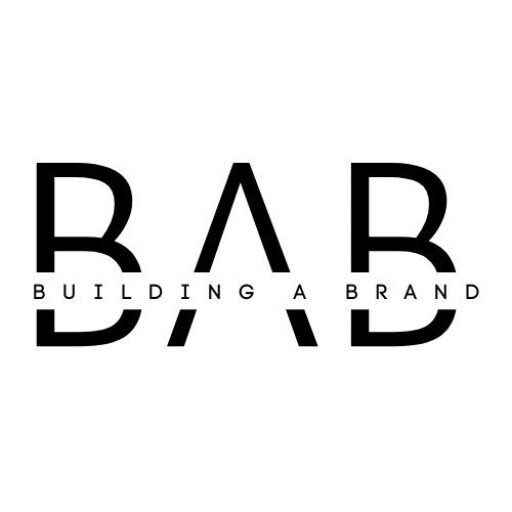Mastering the Marketing Funnel: A Step-by-Step Guide to Boosting Lead Conversion and Sales Success
Mastering the marketing funnel is a pivotal strategy for any business aiming to boost lead conversion and achieve sales success. As a trusted advisor, BABWJP and Jeremy Patton are dedicated to educating business owners, marketers, and entrepreneurs on the intricacies of building a brand through effective marketing strategies. This guide will walk you through the stages of a marketing funnel, offering insights on how to optimize each one to enhance your sales pipeline. By understanding and refining these funnel stages, you can transform potential leads into loyal customers, thereby ensuring your business thrives in a competitive marketplace. Join us as we delve into proven tactics and success stories that will inspire confidence and optimism in your marketing endeavors.
Understanding the Marketing Funnel
Stages of a Marketing Funnel
A marketing funnel is a model that illustrates the customer journey from initial awareness to final purchase. It typically consists of four main stages: Awareness, Interest, Decision, and Action. In the Awareness stage, potential customers become aware of your brand or product. The Interest stage involves engaging prospects and nurturing their curiosity. During the Decision stage, leads evaluate your offering against alternatives. Finally, the Action stage is where conversions occur. Each stage requires specific strategies to move leads closer to a purchase.

Understanding these stages is crucial for optimizing your marketing efforts and improving lead conversion rates. By tailoring your approach to each stage, you can create a more effective sales pipeline and guide potential customers towards making a purchase decision.
Importance of Lead Conversion
Lead conversion is the lifeblood of any successful marketing funnel. It’s the process of transforming potential customers into paying clients, directly impacting your bottom line. Effective lead conversion not only increases sales but also enhances the efficiency of your marketing efforts. By focusing on conversion, you maximize the return on your marketing investment, ensuring that resources are utilized optimally.

Moreover, high conversion rates indicate that your marketing messages resonate with your target audience, validating your brand’s value proposition. This alignment between your offering and customer needs fosters long-term relationships, leading to repeat business and referrals. In essence, mastering lead conversion is crucial for sustainable growth, as it directly contributes to building a loyal customer base and establishing a strong market presence.
Effective Marketing Strategies
Implementing effective marketing strategies is essential for optimizing your marketing funnel and driving lead conversion. Content marketing stands out as a powerful approach, providing value to potential customers at every stage of the funnel. By creating informative blog posts, whitepapers, and case studies, you can attract and engage prospects while establishing your brand as an industry authority.

Email marketing remains a highly effective tool for nurturing leads and guiding them through the funnel. Personalized email campaigns can keep your brand top-of-mind and provide targeted information to move leads closer to a purchase decision. Additionally, social media marketing allows for direct engagement with your audience, fostering relationships and building brand loyalty. By integrating these strategies, you create a cohesive approach that addresses the needs of potential customers at each stage of the marketing funnel.
Optimizing Funnel Stages for Success
Building a Brand Through Funnels
A well-crafted marketing funnel is not just a tool for conversions; it’s a powerful mechanism for building a brand. Each stage of the funnel presents an opportunity to reinforce your brand identity and values. In the awareness stage, focus on creating content that aligns with your brand’s mission and resonates with your target audience. As leads move through the funnel, consistently deliver on your brand promises to build trust and credibility.

Use personalized messaging and tailored offers in the interest and decision stages to demonstrate your understanding of customer needs. In the action stage, ensure a seamless purchase experience that reflects your brand’s quality. By maintaining brand consistency throughout the funnel, you create a cohesive customer journey that not only converts leads but also fosters long-term brand loyalty and advocacy.
Enhancing the Sales Pipeline
Optimizing your marketing funnel directly impacts the efficiency of your sales pipeline. By refining each stage of the funnel, you can streamline the process of moving leads from initial awareness to final purchase. Start by analyzing data at each funnel stage to identify bottlenecks or drop-off points. Use this information to implement targeted improvements, such as refining your messaging or offering additional support to hesitant leads.

Implement lead scoring to prioritize high-potential prospects and allocate resources effectively. Automate repetitive tasks to free up your sales team for more valuable interactions. Regularly review and update your sales collateral to ensure it aligns with customer needs at each funnel stage. By continuously optimizing your funnel, you create a more efficient sales pipeline that not only converts more leads but also shortens the sales cycle, ultimately driving revenue growth.
Tips for Effective Optimization
To effectively optimize your marketing funnel stages, start by setting clear, measurable goals for each stage. Use analytics tools to track key performance indicators (KPIs) such as conversion rates, click-through rates, and average time spent on pages. Regularly conduct A/B testing on your content, landing pages, and call-to-action buttons to identify what resonates best with your audience.
Personalize your marketing messages based on user behavior and preferences to increase engagement. Implement retargeting strategies to re-engage leads who have shown interest but haven’t converted. Continuously gather and analyze customer feedback to identify pain points and areas for improvement in your funnel.
Ensure your content is tailored to address specific questions and concerns at each funnel stage. Optimize your website for mobile users to provide a seamless experience across devices. Finally, regularly train your sales and marketing teams on new optimization techniques and best practices to keep your funnel strategy up-to-date and effective.
Strategies for Sales Success
Increasing Lead Conversion Rates
To boost lead conversion rates, focus on creating a seamless and engaging customer journey. Start by developing high-quality, targeted content that addresses specific pain points at each stage of the funnel. Implement lead nurturing campaigns that provide value and build trust over time. Use personalized email sequences to guide leads through the decision-making process.
Optimize your landing pages with clear, compelling calls-to-action and minimize form fields to reduce friction in the conversion process. Leverage social proof through customer testimonials and case studies to build credibility. Implement live chat or chatbots to provide instant support and address potential objections in real-time.
Consider offering limited-time promotions or exclusive content to create a sense of urgency. Regularly analyze your conversion data to identify and eliminate bottlenecks in your funnel. By continuously refining your approach based on data-driven insights, you can significantly improve your lead conversion rates and drive sales success.
Developing a Strong Sales Pipeline
A robust sales pipeline is crucial for consistent revenue growth. Start by clearly defining your ideal customer profile and target market to ensure you’re attracting quality leads. Implement a systematic approach to lead generation, utilizing a mix of inbound and outbound strategies tailored to your audience.
Develop a standardized process for qualifying leads, ensuring that your sales team focuses their efforts on the most promising prospects. Use a customer relationship management (CRM) system to track interactions and streamline follow-ups. Regularly review and update your pipeline to maintain accuracy and identify potential bottlenecks.
Create a content strategy that aligns with each stage of the sales process, providing valuable information to move leads forward. Establish clear metrics for measuring pipeline health, such as conversion rates between stages and average deal size. By consistently nurturing and managing your sales pipeline, you’ll create a predictable and scalable revenue stream for your business.
Leveraging Branding for Growth
A strong brand can significantly amplify your sales success by creating trust, recognition, and loyalty among your target audience. Start by clearly defining your brand’s unique value proposition and consistently communicating it across all marketing channels. Develop a distinctive visual identity, including logo, color scheme, and typography, to make your brand instantly recognizable.
Create high-quality content that aligns with your brand values and resonates with your audience’s needs and aspirations. Leverage social media platforms to showcase your brand personality and engage directly with customers. Encourage user-generated content and testimonials to build social proof and authenticity.
Invest in thought leadership initiatives to position your brand as an industry expert. Consider strategic partnerships or collaborations that can expand your brand’s reach and credibility. Regularly monitor and manage your online reputation to maintain a positive brand image. By consistently reinforcing your brand identity throughout the customer journey, you’ll create a powerful foundation for sustainable growth and sales success.

